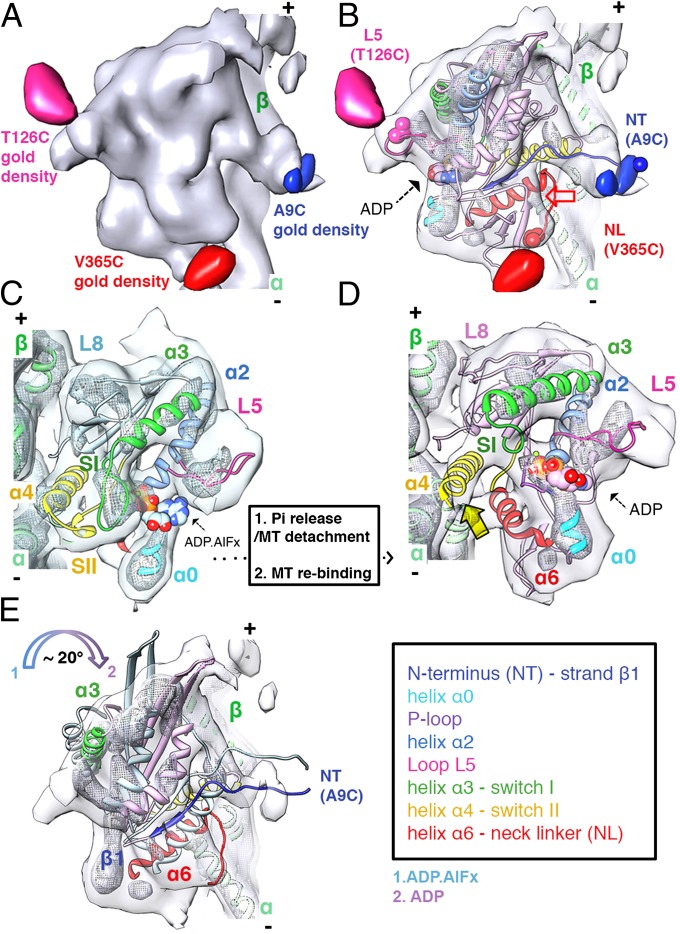Fig. 2.
The ADP MT weak-binding state. (A) ADP state (1.5σ contour, the same volume as in Fig. 1A) with gold density difference maps superimposed (blue: 1.5σ; pink: 2.5σ; red: 1.9σ contours). (B) Pseudo-atomic model of K5 MD bound to an αβ-tubulin dimer (surface contoured as in A; mesh 3σ contour 1/3 of the surface volume). The red arrow indicates the absence of EM density accommodating the N-terminal part of the NL and the C-terminal part of helix α6 to which it is attached. (C and D) Comparison of K5 MD pseudoatomic models of the ADP.AlFx (C) and ADP (D) states; surfaces and meshes are contoured as in Fig. 1C (C, ADP.AlFx) and Fig. 1B (D, ADP). The yellow arrow indicates the lack of density for switch II that therefore is absent in our ADP model. (E) The ADP MT weakly bound state is rotated clockwise with respect to the MT axis compared with the ADP.AlFx state (color-coded arrows). The surface is contoured at 2σ; for clarity, only some of the secondary structural elements are shown.

